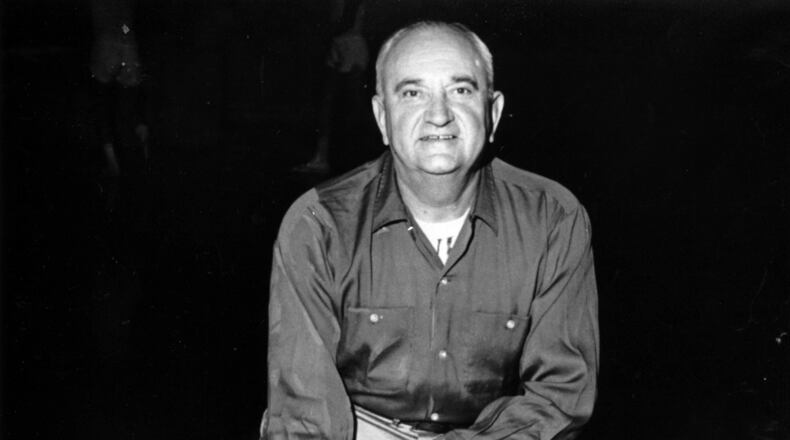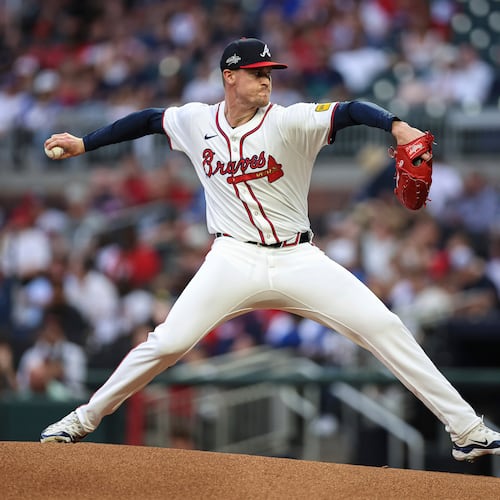Vernon Hatton went out in a blaze of buzzer-beaters. He sank one shot so improbable that Kentucky would mark the spot on the floor from which it was launched as if Daniel Boone himself had made some history there. In the 1958 Final Four, Hatton laid in the game-winner against Temple in the semis and outscored the great Elgin Baylor in the championship game.
A grateful group of boosters wished to see him off to the working world in style.
“After we had won the national championship, a group got together around town and said, ‘Vernon we’re going to take up a collection and buy you a car,’” Hatton remembered recently.
“A month or two went by. I had gotten all my relatives to send in a few dollars anonymously to build up the fund.
“Finally after almost the end of the year, they said, ‘Well, we got some kind of bad news for you. We got the money to buy a car, but we’re going to buy coach Rupp a new Cadillac.’”
The moral of the tale was that players came and went, providing the skilled labor that built Kentucky’s basketball tradition. But Adolph Rupp, the Baron of the Bluegrass, the job foreman, seemed everlasting.
Hatton was left with only an unfulfilled dream of vengeance.
“I went around trying to find that Cadillac parked on the street,” he said. “I was going to put a key across it. Never did find it, though.”
Rupp was a 29-year-old high school coach when he interviewed for the Kentucky position in 1930. Asked at one point during the process why the university should consider him, Rupp reportedly answered, “Because I’m the best damned basketball coach in the nation.”
He spent the next 42 years in Lexington trying to prove it.
Rupp won 82 percent of his games over that span, along the way taking four NCAA titles and 27 SEC championships. The period of his greatest success, one that to this day underpins Kentucky’s image of itself as the Camelot of college basketball, was the decade between 1948 and ’58, in which Rupp won all his national championships.
Rupp’s teams established college basketball as the official state sport of Kentucky. Every son of the Commonwealth wanted to grow up to be a cog in his machine, and, indeed, many of Rupp’s best teams largely were homegrown.
A boy grew up in Farmington, Ky. in the late ’30s and early ’40s. His rural home had no electricity. His family did, however, possess a battery radio. He listened to the action from the Wildcats game between the bursts of static. He’d see the faces of the players on the Ashland Oil team poster that he hung near his bed. And one day Adrian Smith would play on the 1958 team that delivered Rupp his final NCAA title.
“Back in Kentucky, you couldn’t believe what a pedestal they put that program on,” Smith said.
Another Kentucky native, Hatton, had chances to go elsewhere after high school.
“In Florida (Rollins College), they promised me if I went there I’d marry a millionaire girlfriend,” he said.
“BYU wanted me real bad because I’m a Mormon.
“Once I got a chance to play for Kentucky, it changed my mind real fast about going somewhere else.”
Rupp was not a cuddly fellow. The country boys learned very quickly that here was a man who was not interested in nurture. He was a pragmatist who lived in the non-negotiable world of winning and losing.
When Hatton went into the Army, his drill sergeants held no terror. He found them to be so many Captain Kangaroos compared with Rupp.
“(Rupp) would say, “I’m no father-son kind of coach. If I’d wanted that I would have had some children and bought some Herefords and become a farmer instead of a basketball coach.’ He brought you in to play basketball or get out of there,” Hatton said.
“It took us five or 10 years to realize how much we loved him after we graduated. It took us that long to get over him, I guess. We eventually realized he took a bunch of snotty-nosed kids and made halfway men out of them.”
In his own way, Rupp constructed an irresistible style of basketball that was ahead of its time. His teams would actually try to get from one end of the court to the other as quickly as possible, and maybe sew a little confusion among the opposing players in the process.
That was the method behind Kentucky’s back-to-back championships in 1948 and ’49, the first of those teams given the nickname of the Fabulous Five. (Yes, there was life before floppy shorts, tattoos and Michigan’s Fab Five).
“No question about it, they had a fast-break team before anybody even thought about the fast break,” Hatton said. “Ralph Beard (1945-49) was one of the fastest guards that ever was, maybe the top player who ever played at Kentucky, especially at guard. The Fabulous Five was start of real basketball in the SEC and Kentucky.”
From those beginnings, Rupp fashioned the framework of a tradition that carries on today, even within the schizophrenic system of the best players staying barely long enough to leave a fingerprint.
If you didn’t think basketball was important in Kentucky, Rupp would be happy to educate you. Smith tells the story of a band trying to set up at old Memorial Coliseum before the Wildcats were through with practice.
“He told them, ‘If you miss a note, no one will know it. If one of my players misses a layup, the whole state of Kentucky will know it,’” Smith remembered.
Rupp likely would have had been even more titles to his name if not for some grievous run-ins with the NCAA. His 1952-53 team received, in effect, the first death penalty after revelations stemming from a point-shaving scandal. Back on the court the following year, his team went undefeated during the regular season but, embroiled in an eligibility dispute with the NCAA, Rupp pulled the Wildcats from the postseason tournament.
Hatton was part of the last best Rupp team. His half-court heave vs. Temple that sent a December game into the second of three overtimes inspired some executive-level vandalism. Governor Happy Chandler himself raced onto the floor after the Wildcats finally won and marked the spot by driving a nail into the hardwood until it could be more appropriately commemorated. What Hatton’s layup in the rematch with the Owls in the semifinals lacked in distance it made up for in significance.
One of Rupp’s landmark Final Fours was the last one in which he appeared, ending in a loss to Texas Western in the 1966 championship game. That was a message game, Rupp’s all-white team losing to the first all-black starting five in tournament history. In his more four decades coaching at Kentucky, Rupp had one African-American, Tom Payne, play for him.
He took mandatory retirement at the age of 70 in 1972 and died five years later.
Between the height of the Rupp era and Kentucky’s last national championship in 2012, the game had made Evel Knievel-like evolutionary leaps. Yet Hatton noted a certain timelessness to the celebration.
“Last year it was like everybody thought I was still playing,” he said. “Kentucky does not forget the teams that win the NCAA. They’re up on a pedestal.”
About the Author
Keep Reading
The Latest
Featured



